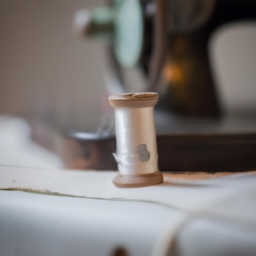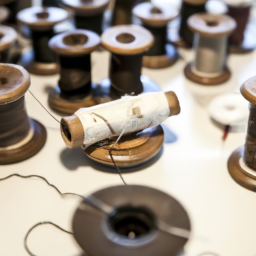
History of Standard Sewing Machine
sewing-machine.jpg” alt=”Vintage Sewing Machine”>
Introduction
Sewing machines have revolutionized the textile industry and made mass production of garments possible. The standard sewing machine, a remarkable invention, played a significant role in the history of sewing and fashion, changing the way people create and mend clothes forever.
The Invention
The first practical sewing machine, which laid the foundation for the standard sewing machine, was invented in 1790 by English inventor Thomas Saint. However, it wasn’t until the mid-19th century that sewing machines were mass-produced and became widely available.

Elias Howe, an American inventor, patented the first automatic sewing machine in 1846. Howe’s machine featured the lockstitch mechanism, a crucial advancement that helped lay the groundwork for modern sewing machines. Isaac Merritt Singer, another prominent figure in sewing machine history, improved upon Howe’s design and established the Singer Sewing Machine Company in 1851.
Impact on Sewing and Fashion
The introduction of the standard sewing machine allowed for faster and more precise production of garments. It significantly reduced the time required for sewing, enabling seamstresses to handle complex designs and increase their productivity enormously. This invaluable machine made it possible to create intricate embroidery and decorative stitching, enhancing the artistic element of dressmaking. As a result, the fashion industry experienced rapid growth, popularizing ready-to-wear clothing.

The industrialization of sewing machines had a transformative effect on society. It empowered individuals to become self-employed or work from home, as sewing took on the form of cottage industries. The access to affordable clothing increased, improving overall standards of living.
Modern Advancements
In the 20th century, further technological advancements in sewing machines allowed for the development of computerized models. These modern machines offer a wide range of automatic functions, intricate stitching patterns, and programmable settings. Today, sewing machines are not only utilitarian tools but also popular hobbies, enabling individuals to express their creativity through custom-made garments and accessories.
Conclusion
The history of the standard sewing machine stands as a testament to human innovation and the desire for increased efficiency in various fields. Its invention revolutionized the production of clothing, enabling us to enjoy the convenience and artistry of the garments we wear today.
So, the next time you pick up a sewing machine, take a moment to appreciate the profound impact this simple yet ingenious device has had on our daily lives and the world of fashion.




